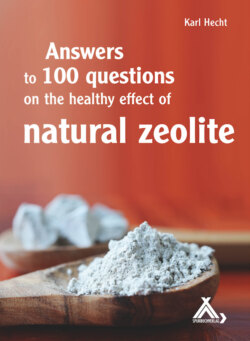Читать книгу Answers to 100 questions on the healthy effect of natural zeolite - Karl Hecht - Страница 13
Оглавление5_What is the difference between bentonites and montmorillonites?
Normally, bentonites and montmorillonites (also called smectites) occur as a mixture of both silicates, however, at different percentages. There is a general international agreement on the terminology, i.e. all types of sheet clay with < 50 % montmorillonite have to be called bentonite. If the percentage of montmorillonite is > 50 % the term montmorillonite has to be used instead. A high percentage of montmorillonite is better for medical reasons because of its healing effect. The bentonite from Kazakhstan, which is certified in Germany and Russia, has a percentage of 95 % montmorillonite. For this reason, it has to be called montmorillonite. In order to test the quality of montmorillonite, montmorillonite powder has to be put into a glass of water. The quality is good when the powder starts to clump and is difficult to dissolve. Afterwards, the liquid has to be steered until the powder has dissolved. Now the liquid is ready to be drunk. As already mentioned, smectite is another term for montmorillonite.
